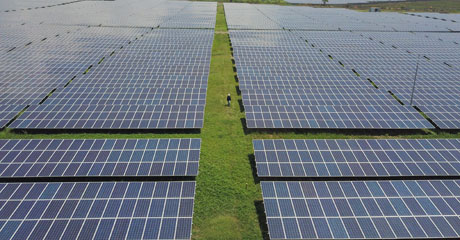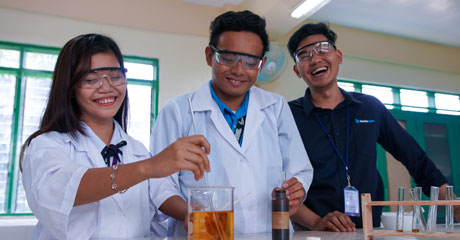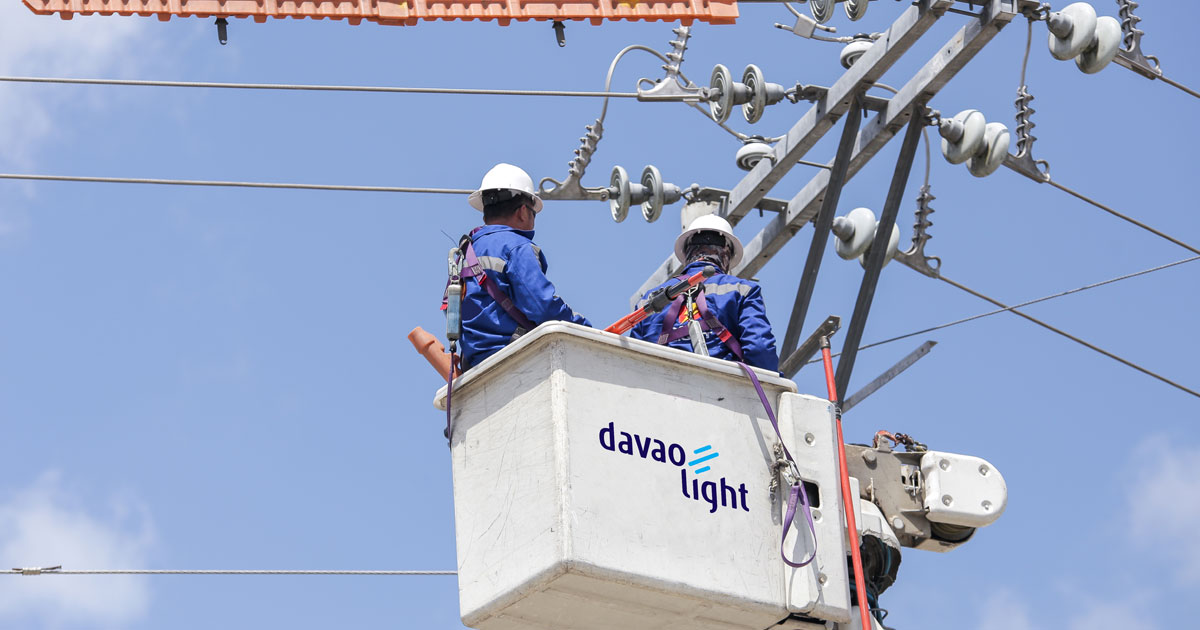Who We Are
AboitizPower is the Philippines’ leading provider of renewable energy, advancing business and communities towards A Better Future.

AboitizPower is the Philippines’ leading provider of renewable energy, advancing business and communities towards A Better Future.

AboitizPower champions sustainability initiatives and ventures that help make the world a better place not only for people living today but for generations to come.

AboitizPower upholds the highest ethical standards, safeguarding the integrity of our initiatives and developments as a business enterprise and a partner for environmental protection.

View our shareholder relations and investment reports and find out how we prioritize addressing the triple bottom line of people, planet, and profit.

Stay updated on the latest stories and developments about AboitizPower.

A Better Future and career await you at AboitizPower. Browse through our job vacancies and join our ever-growing family today!
Home Newsroom SustainabilityOn energy and food security (part 2)
March 06, 2024

The generation of electricity and the production of food have a give and take relationship as they both require and compete for scarce resources like water and land. Suffice to say that the food value chain — from producing, storing, processing, then all the way to consuming — is also supported by electricity.
In last week’s Chords column, I discussed the Magat dam, a multi-purpose facility that caters to 85,000 hectares of irrigated land and a 360 megawatt hydroelectric power plant. In Magat and other similarly situated facilities, the job of managing and allocating the water supply is already challenging as it is especially during an El Niño.
In power generation, we look to other energy sources to fill the gap left by hydro plants during this prolonged dry spell. But, similar to hydro, other energy sources are also subject to circumstance. Hence, the need to find ways on how we can compensate for the shortcomings of one with the strengths of the others.
As someone in the power industry, I can confidently say that there is no such thing as a perfect energy source. While coal and natural gas can consistently generate electricity on demand and at scale, with its facilities taking up significantly less space per unit of electricity produced, it emits carbon dioxide. Moreover, in the case of the Philippines, the country’s standing as a net importer of non-renewables begets exposure to the potential supply and price shocks of the international market.
Even renewables aren’t perfect. I have already outlined the limitations of hydro power so consider another source: solar power. The appeal of solar is how its sourcing is inexhaustible, making it independent from the supply and price fluctuations of finite traded commodities. However, this is only during the day time, and even then solar has a capacity factor of just 17%. This means that out of 100 megawatts of installed solar capacity, only 17 megawatts is effectively produced. For context, larger baseload power plants like coal and geothermal have a capacity factor of more than or equal to 67%, while mid-merit load power plants like natural gas facilities generate between 23% to 67%.
But another opportunity cost for solar is how it competes with tracts of land for food production, especially as agricultural land is an optimal site for solar farms given its flat topography and exposure to sunlight. Consider how one hectare of land can be equivalent to either one megawatt in solar power generation at its peak (i.e. under ideal conditions) or about four metric tons of rice in a year. You can just imagine how much farmland is displaced when solar (which is again an intermittent source) attempts to produce the same amount of power a baseload or mid-merit power plant generates.
Just to be clear, this essay is not meant to discourage the scaling of solar farms. After all, climate change is real and our global society needs to transition to cleaner sources of energy. Rather, what I am trying to point out here is the need for managed land conversion use. This is so that we can balance or even reconcile the delicate tradeoffs between energy security and food security, both of which play pivotal parts in determining gross domestic product, inflation, and even social stability. Needless to say, we are dealing directly with the lives of our fellow Filipinos.
In relation, such planning should also consider the inevitable need to recycle or dispose of solar panels (and even wind turbines from wind power plants) once they are significantly damaged or reach the end of their operational lives. Understanding the full life cycle of these materials, including its impact on the environment, should precede careful planning and lead to proper disposal and stewardship. Yet again this can pose as another tradeoff to land-use and agriculture.
In all, the challenge is really on how the country can harness and rationally optimize all the energy and agricultural sources and assets it has at its disposal, while ensuring that it is done sustainably for the sake of future generations. Admittedly, this is easier said than done.
Moreover, in both sectors, driving solutions home requires the participation of all its stakeholders from public to private to civil society. Outside of the already challenging aspects of farming, for instance, farmers need better farm-to-market roads and storage facilities, among others. Meanwhile, in the power industry, generators need a stabler and smarter transmission and distribution highway with sufficient capacities and geographical reach.
Touching on the theme of this column — of noticing how the subtleties of elements, whether in music or in life itself, blend together to form a harmony — the intertwined social realities of electricity and food should be fully understood and reconciled for the sake of a better life for all Filipinos. Everyone should work together.
On our end, we, at AboitizPower, are dedicated to running our diverse fleet of power plants with world class availability and efficiency to help mitigate the country’s thin supply margins and reliably support the aggregate demand, as we did in 2023. While water inflows for our hydroelectric plants may be more of a challenge this year, we remain confident in our generation facilities — led by our 1,336 megawatt GNPower Dinginin power plant — and a number of energy projects to come online in 2024.
Once again, we look forward to helping sustain an economic growth that is among the fastest in this part of the world. But, truth be told, until the nation can confidently say that it is secure in terms of energy and food, I think this growth story has barely begun.
Chords is the monthly column of Emmanuel V. Rubio — biker, music lover, and President and CEO of AboitizPower. It references his passion for playing the guitar and how the combination of notes & the subtleties of strumming produce unique melodies when the sounds of individual strings are blended together, much like the elements of industry, corporations, and life.

In line with its commitment to promoting a culture of safety across the organization and among its partners, the AboitizPower Coal Business Unit (BU) ...

Aboitiz Power Corporation (AboitizPower) has been recognized as a constituent company in the FTSE4Good Index Series for the fourth consecutive year an...

AboitizPower confirmed its place as one of Philippines’ leading graduate employers when the Top 100 Graduate Employers were announced last May 1...

As one of the Philippines’ largest power producers, we help fill the nation’s growing energy needs by providing secure and affordable access to sustainable power across the country.
Learn more about our businesses
AboitizPower champions sustainability initiatives and ventures that help make the world a better place not only for people living today but for generations to come.
View our sustainability initiatives
View our shareholder relations and investment reports and find out how we prioritize addressing the triple bottom line of people, planet, and profit.
Visit our investor relationsWe use cookies to personalize content and ads, which enables us to analyze our traffic.
If you continue
to use this website, you consent to the use of our cookies.
Find out more here.